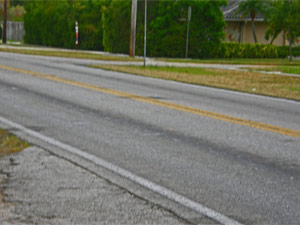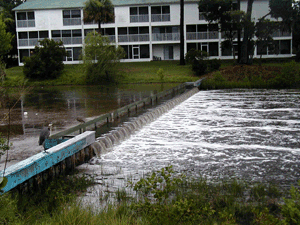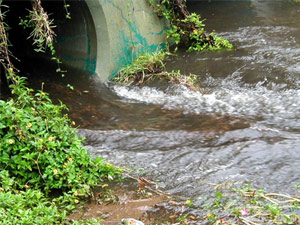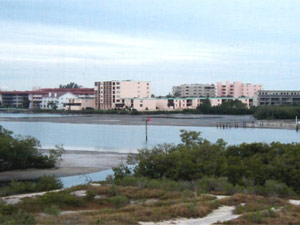Storm Water Damage
If you enjoy fishing, conventional pavements are against your interests. Asphalt and conventional pavements absorb the sun’s rays and convert them to heat. When it rains, the temperatures of storm water run offs may be elevated 10º to 30ºF. That warm water can stress or kill marine life, water plants and helpful bacteria. Elevated temperatures decrease the amount of oxygen in streams and estuaries which in turn decreases development of fish eggs, young fish and plankton which are the first link in the marine food chain.
Unfiltered storm water discharged into streams and estuaries also carries fertilizers, pesticides, soils and other pollutants which can kill marine life either directly or indirectly. Indirectly, suspended particles can absorb more sunlight thus further raising water temperatures. This is also contributes to algae blooms like red tides which rob additional oxygen from streams, estuaries, lakes and salt water bodies.


As more and more land is covered by impervious surfaces, rain suddenly becomes destructive. Unconstrained storm water floods adjacent properties, roads, streams and estuaries eroding embankments, destroying plant life and causing flooding downstream, sometimes with resulting loss of life. Stream embankments are eroded and have to be repaired with cement or cement beds. Pervious concrete diverts rain water where it belongs, into the soil and the aquifer.


Down stream, toxic sediment is deposited and has to be regularly removed at significant cost.
As pollutants mix with water helped by silt, and other contaminants, solids become sludge which flows through the storm sewers into estuaries, the Intracoastal Waterway and finally into the Gulf of Mexico or our oceans but it drops off the silt along the way. These deposits harm the ecology, may poison shellfish, coral and some plant life and require premature dredging. They also mar the scenery.
Unseen also is water temperature. During the summer hot asphalt, roofs and concrete raises the temperature of rain water. When it gets into the estuaries it has a deleterious effect on marine life from plants, fish, shellfish down to microbes. It all comes back to haunt us.
